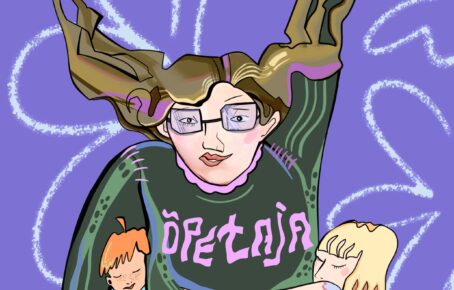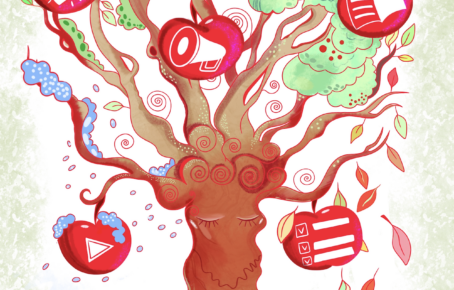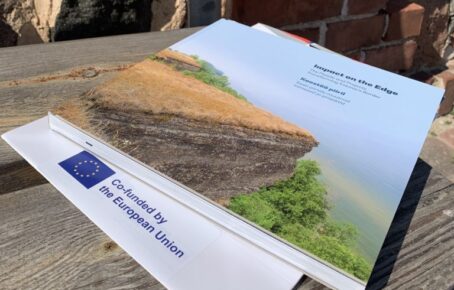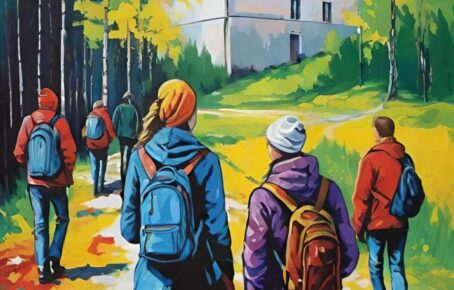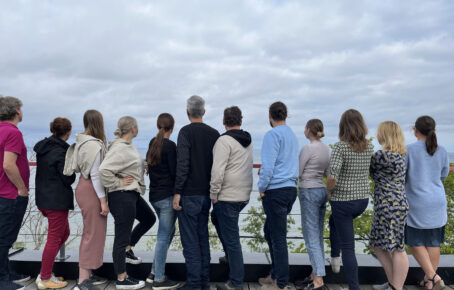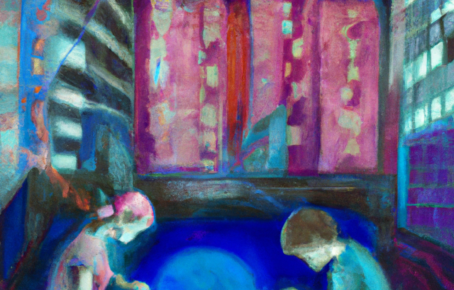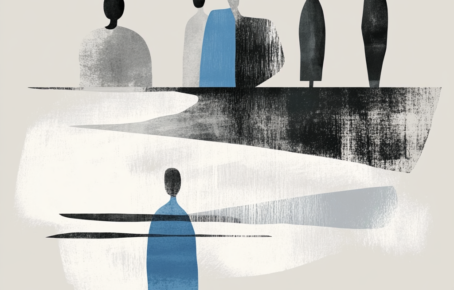
History and Story: An Anchor for Estonian Identity and Policymaking
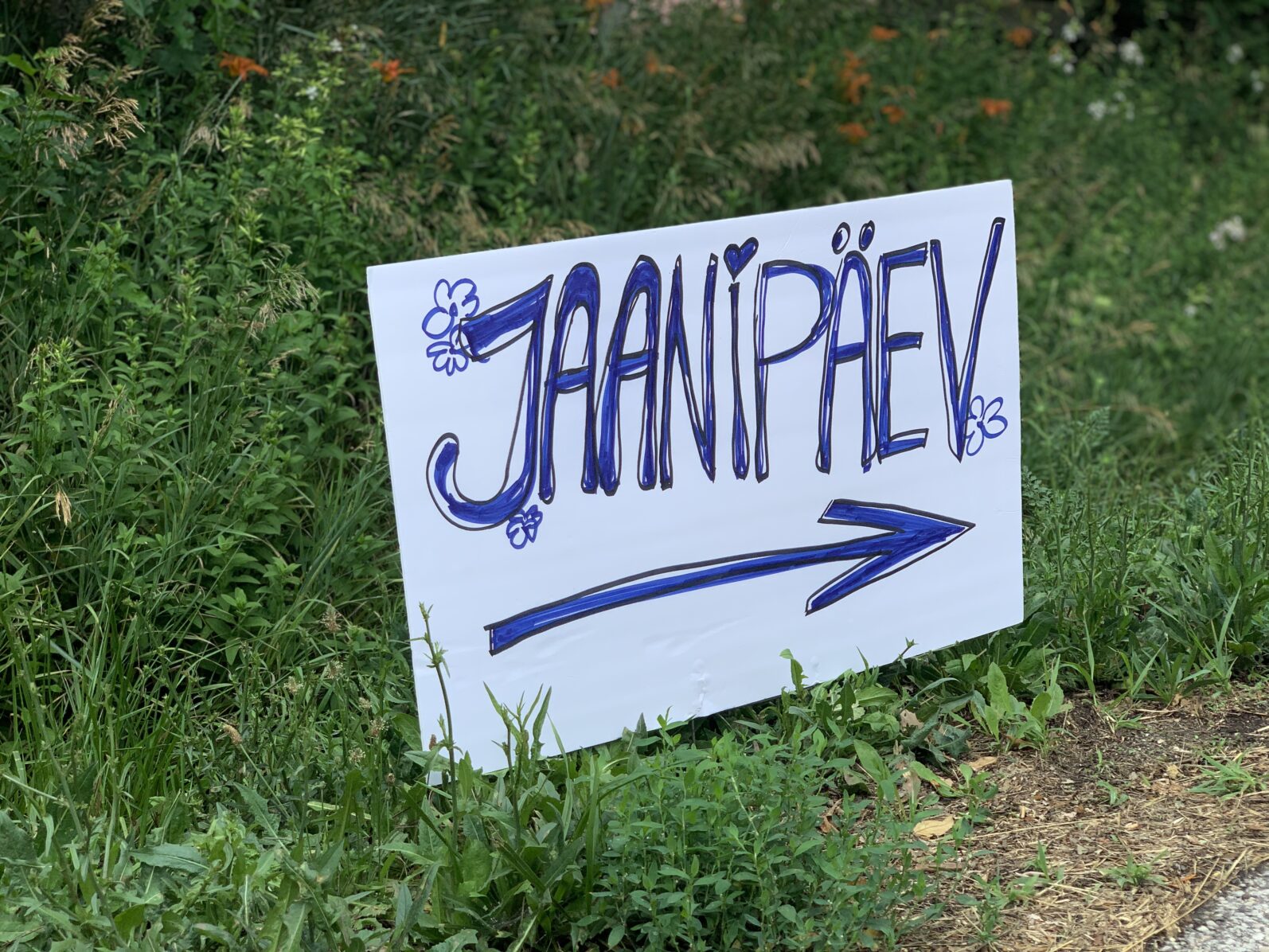
The day was threatening with rain as guests travelled through the wooded lane and arrived at a park on the Fox River for a Jaanipäev event honoring the Estonian holiday that celebrates the Midsummer. As they reached the event site, they were greeted with Estonian music and the Estonian flag flying proudly in the wind. There was a wide array of food setting on the tables, such as tuuletasku (a type of pastry), open face sandwiches in varieties such as salmon and caviar and salami and cucumber, and other delicacies which were awaiting their first customers. Books in Estonian lined the table, and the Estonian language could be heard throughout the event, giving guests plenty of chances to speak Estonian with fellow Estonian-speakers. Attendees went on boat rides in the sun, enjoyed watching the folk dancing, and children played and swam. But most importantly, the event was a time where Estonians could celebrate their heritage and culture together with other Estonians in the Chicago area. This event put on by The Estonian Cultural Society of Chicago is an example of how the Estonian culture is celebrated and remembered within a group of Estonians who form the “Estonian diaspora,” groups of Estonians outside of Estonia made up primarily of those who fled either as refugees in the World War II time period or left Estonia in the post-Soviet era and their descendants.
Over the course of these past 9 months as an intern and then Junior Analyst working on the Estonian communities and diaspora members abroad project, I have learned about the importance of history and stories and how they impact identity on the individual-level and policy-making on the large-scale governmental level. Through activities such as talking to and informally interviewing individual Estonians at the Jaanipäev event, as well as assisting with conducting focus groups and interviews, I gained insight into the lives of Estonian immigrants and their immigration circumstances, identities, and relationship to Estonia. My colleague and I made many observations out of a synthesis of desk research and conversations with Estonians abroad which will be available in the report on the Estonian diaspora abroad in the Chicago Case Study, published later this year.
Even though many immigrants left Estonia years ago, immigration and integration are pertinent issues both for the Estonian communities abroad as well for the Estonian government. The insights gleaned from this case study can also have parallels to the experiences of current refugees from other countries, as well as for other diaspora groups abroad. Now more than ever, especially in light of a huge number of refugees leaving their homes in for example, Ukraine, it is important to listen to the stories of immigrant experiences from the past and learn from history. These historical analyses can help us to initiate the best courses of action and policies in the future.
Immigration Stories and Identities
One fascinating aspect of these Estonian communities abroad is how they are historically rooted microcosms of Estonian culture, coming out of a need for community with other Estonians in a new country and culture during time periods of strife and uprooting for many Estonians who had just fled from their homes and heart-wrenching political situations.
The immigration circumstances of Estonians leaving during World War II were dramatic. Participants used phrases such as “heartbroken” and “there was no future in it whatsoever” to describe their emotions and those of their families in this era, showing the feeling that engulfed many Estonians. The jolting circumstances we heard such as stories of fleeing such as leaving with bread still in the oven or releasing farm animals upon departure show the nature of this time. These types of stories can give us a glimpse into the heartbreaking events that Estonians would have experienced right before they arrived in the United States. Many Estonians also lived with the idea that their families, had they stayed in Estonia, would have likely been sent to labor camps which often eventually led to death. One participant we interviewed describes this type of sentiment saying: “…when the Germans moved in in 1941, they discovered the lists of people to be deported … and, our name was on the list of people to be deported also. So, if we had stayed, there, it would have been a couple months and then we would have been sent to [a] labor camp also.”
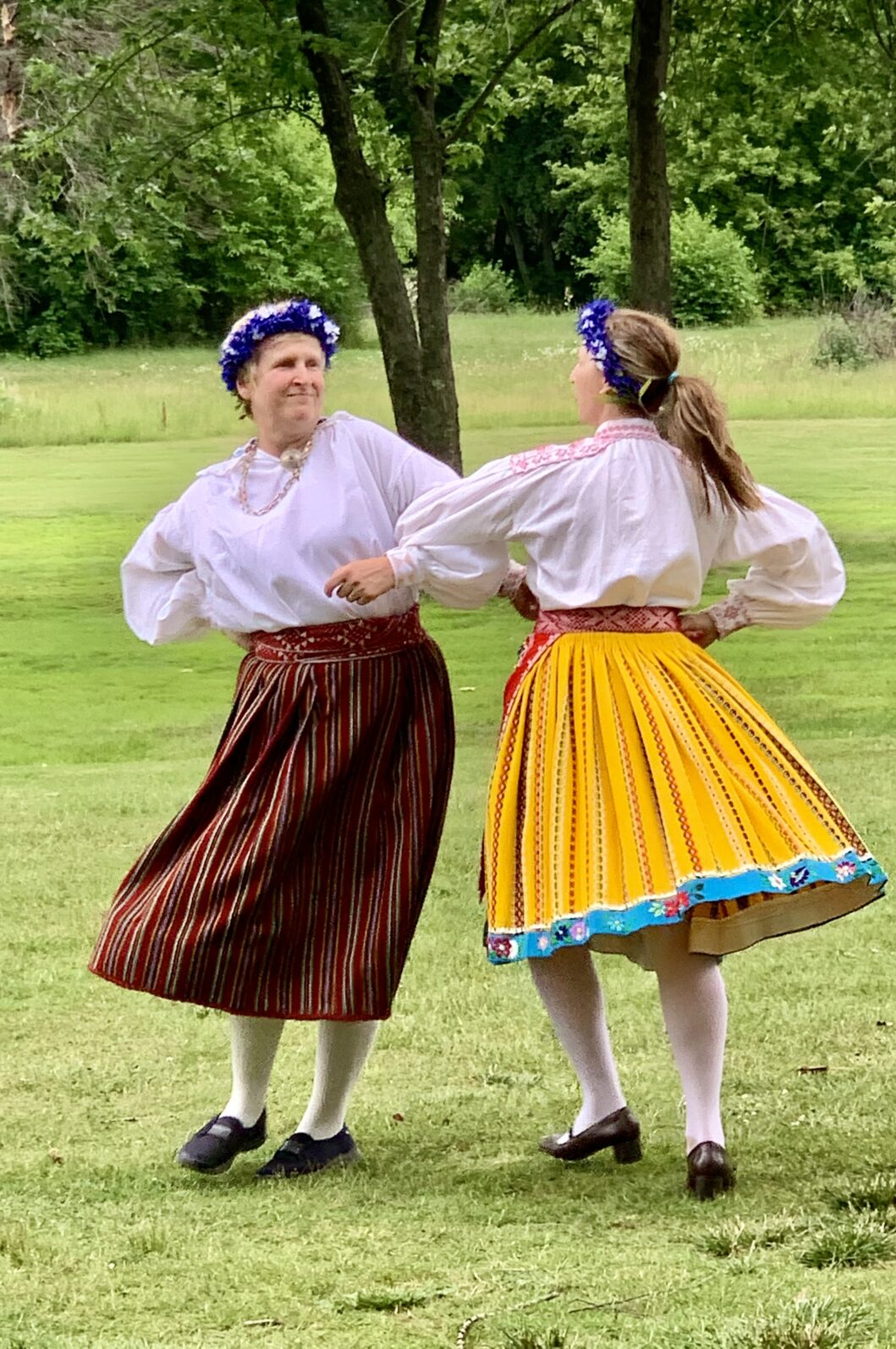
While harrowing, these dramatic immigration experiences provide the backdrop to much of early Estonian immigration and are a key feature to understanding World War II refugees and their later experiences. Many Estonians of this era ended up in Displaced Persons (DP) camps before they made their way to other countries such as the United States. One participant, whose parents were in a DP camp, told us that there were “Little Estonias” with schools and even theatres in the camps. These community groups of Estonians abroad seem to be similar to “Little Estonias” today, and one can understand the desire to be with other like-minded and Estonian-speaking individuals in the midst of these circumstances, both in Estonia as well in the United States. These Estonian cultural organizations, created in different periods of time, still hold importance to many of these World War II immigrants, their descendants, and the next group of Estonian immigrants today.
Another main group that came to the United States were the post-Soviet immigrants who often came in search of new opportunities and adventure, as the Iron Curtain had just been lifted, giving them a chance to, as they called it, “see the world,” which provided a much more optimistic outlook on going aboard. These Estonians looking for new opportunities had drastically different motivations of departure, as opposed to the World War II refugees, and this mentality difference could have a large impact the way an Estonian would react when arriving and integrating into the United States.
Thus, with these backdrops in mind, we can see that historical immigration circumstances have large impacts on how these persons define themselves and how they interact with each other. Groups like the Chicago Estonian House and the Estonian Cultural Society of Chicago provide a place where Estonians can gather together and maintain their ties to the ‘homeland’ in the midst of a very different cultural setting and time period. This cultural heritage is enriching to the individual and makes them feel connected to both countries in a way that many of us have not experienced. One participant described that they felt that “despite being in two parts of the world, throughout our lives, our hearts – bits and pieces of our hearts – are… in both places, kind of everywhere.” This sentiment shows the strong connection to two countries that someone growing up in an Estonian-American context might feel, as well as how this can create different categories of cultural identity.
History and Policymaking
That warm and rainy day during the summer of 2021 and my work on the Estonian diaspora project taught me many important aspects about listening to stories from the past and how this affects individuals in the present. But history and these stories cannot go unnoticed in policy making and bring many important insights that could be used in the formation of diaspora policy by the Estonian government, which is one of the main aims of the Estonian communities and diaspora members abroad project. To make good policies, one must know what has and has not worked in the past and the reasons a particular group of people may be open or reticent to particular policies, thus making good research vital in the policy-making process. Additionally, listening to the experiences of immigrants and refugees is important for American immigration and integration policy as well, and this type of qualitative research can bring many insights for host countries and their citizens, helping them to better understand the experiences of immigrants in their communities thus helping them welcome and engage with them.
Becoming an “Eestophile”
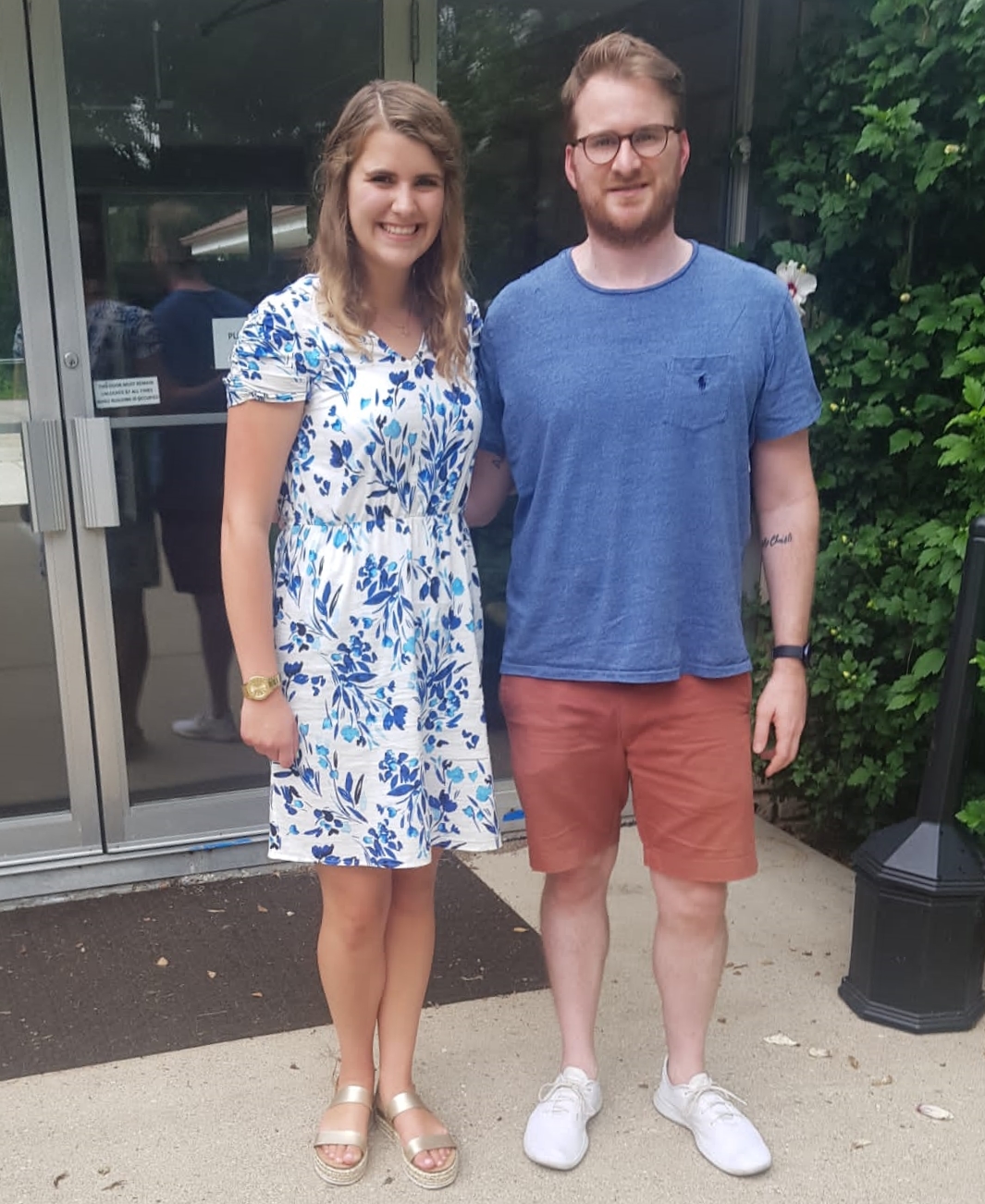
The Estonians in these communities that I met were extremely welcoming, hospitable, and inspiring to me. Many of them were willing to share their stories, which I listened to with eagerness. They allowed me to participate in their culture and event, ‘roping’ me into their tug-of-war-like competition and even listening to me speak very basic Estonian as I practiced my numbers, “üks, kaks, kolm,” while participating in the bean bag toss! This group of Estonians in the United States inspired me on a personal level as well and I am grateful to all of the Estonians I met for allowing me to participate and to hear their stories! These experiences, along with my stay in Estonia last fall made me identify strongly with the term I learned in one of the focus groups of being an ‘Eestophile’– someone who deeply loves Estonia and Estonian culture!
As that warm and rainy Jaanipäev day filled with Estonian culture, delicious foods, and boat rides started to come to a close, a huge fire was lit, which offers a reminder of how traditions such as Jaanipäev have continued over the years, thus perpetuating Estonian culture both inside and outside of Estonia. With this setting of a blazing fire in one’s mind closing off a wonderful day with Estonians from different eras gathered together in the suburbs of Chicago for a festival honoring their culture, one can reflect on all that the immigrants had gone through who formed these communities and how their legacies of Estonian culture live on among the Estonian diaspora.
Emily Vogel
Junior Analyst at Institute of Baltic Studies during the Estonian diaspora project
Read more about Emily’s internship experience at IBS from her university website.
Read Ricky’s observations of Estonians in Chicago.
